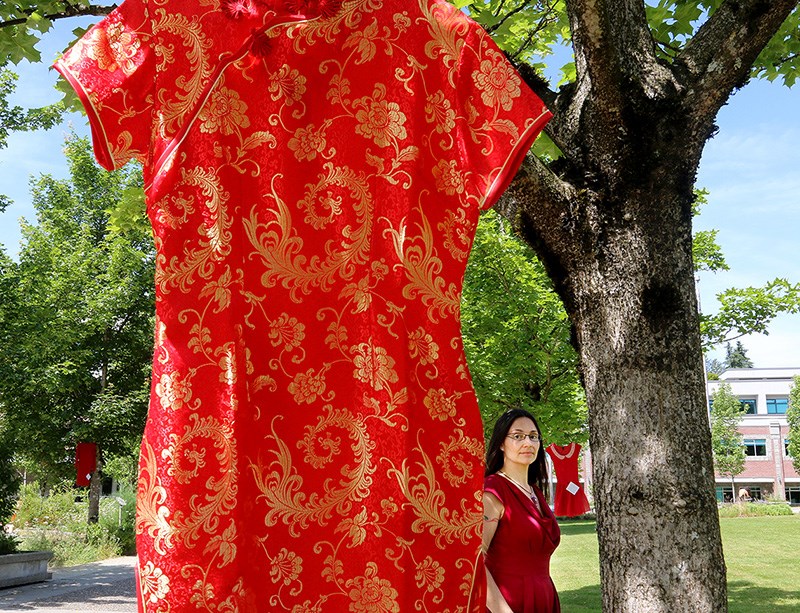It’s not laundry day at Douglas College
The 24 red dresses hung from trees at the school’s Coquitlam campus and blowing in the gentle late-spring breeze are a symbol of something much more serious.
The dresses, which range from a fancy prom gown to a simple child’s frock, are a local take on the REDress Project, an art installation initiated in 2014 by Métis artist Jaime Black to commemorate more than 1,000 missing and murdered Indigenous women across Canada.
The garments were gathered and hung by students in Teresa Howell’s third-year psychology course at Douglas that focusses on cultural competency and counselling in Indigenous communities.
Howell said the students’ display is a way to create deeper understanding of issues like racism and oppression of Indigenous people by showing, in a real way, their consequences.
“It’s looking at the bigger picture of systemic racism and how it can be detrimental to everybody,” Howell said.
The dresses are hung in trees along the school’s main walk from Pinetree Way that passes right by its Indigenous garden, as well as around the plaza to the main entrance. An explanatory card is pinned to each one.
“I wanted it to be easy for people to know what it is about,” Howell said.
The timing of the dresses’ appearance is no accident, either. The installation began June 7, just four days after the federal government released the final report from its inquiry into the social, economic, cultural and historical causes of violence against Indigenous women and girls that launched in 2016.
While one of the report’s conclusions was there was no reliable way to determine how many Indigenous women have been murdered or gone missing over the years, it did say the murder rate for Indigenous women in Canada was almost six times higher from 2001 to ’15 than it was for non-Indigenous women. The report blamed “persistent and deliberate human and Indigenous rights violations and abuses,” and recommended “dismantling the structure of colonialism within Canadian society.”
Howell said the dresses make the statistics and bureaucratic statements more real, driving the issue home to young people when they’re still seeking their place in the world.
“They’re at such a pivotal age to gain awareness and to look at the world in a different way,” she said, adding she’s confident at least one or two might heed the message of the dresses as a call to action to begin volunteering or even alter their career path.
“People learn quite viscerally.”
Howell said she hopes the dresses will remain in place through the school’s summer semester, beckoning curiosity from passersby and, hopefully, sparking a dialogue, not only amongst students but across the community.
“It’s powerful.”
• Friday is National Indigenous Peoples’ Day and there are several events in the Tri-Cities, including a student festival at Rocky Point Park in Port Moody hosted by students and staff of School District 43’s Aboriginal Education program. The event, which runs from 9:30 a.m. to 2:30 p.m., will also include a free drop-in lacrosse for beginners and advanced players. From 6 to 9:30 p.m., there will be a water blessing ceremony with Elder Ta7ah Amy George and Charlene Aleck from Tsleil Waututh First Nation as well as a feast at 7:30 p.m. and entertainment beginning at 8 p.m.



